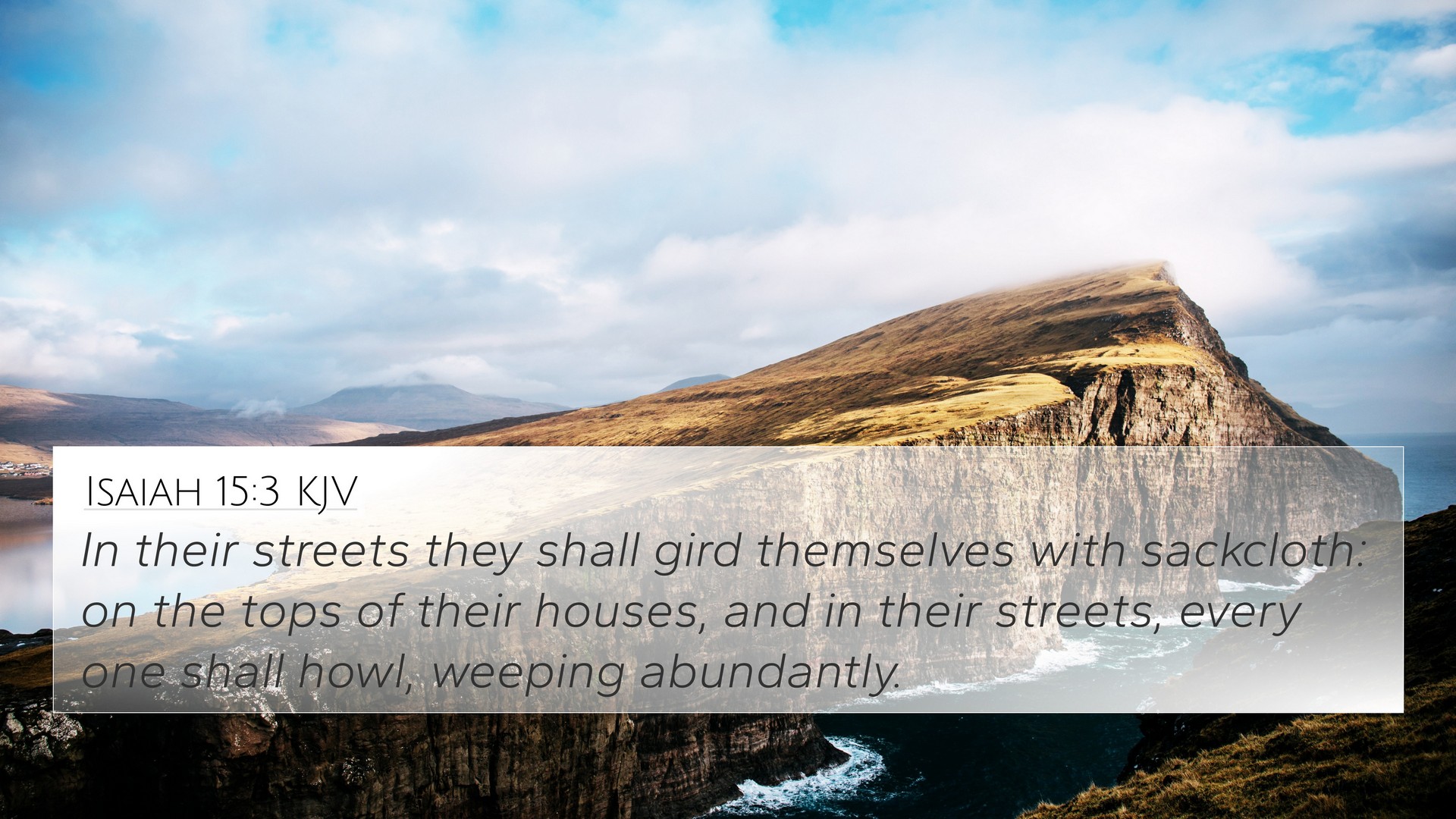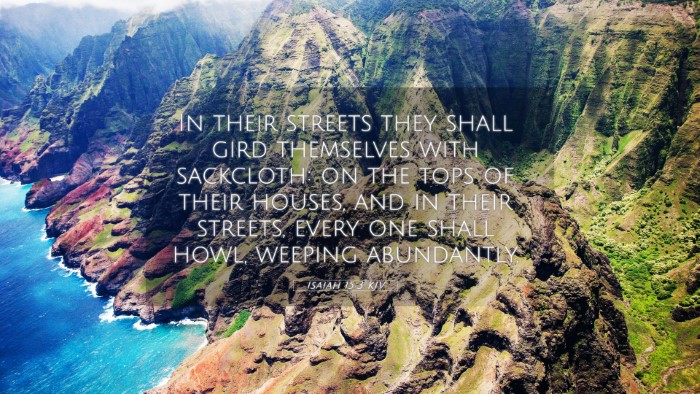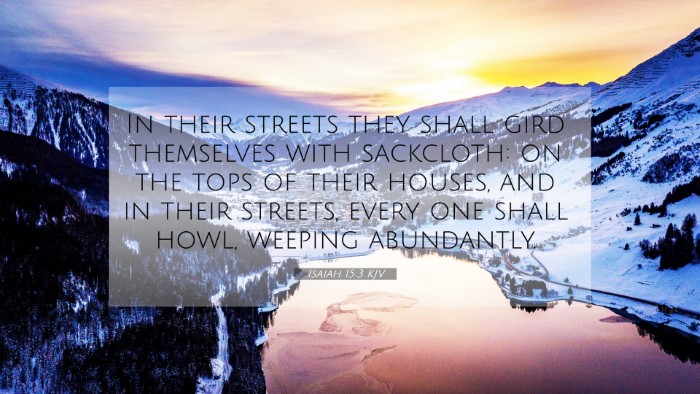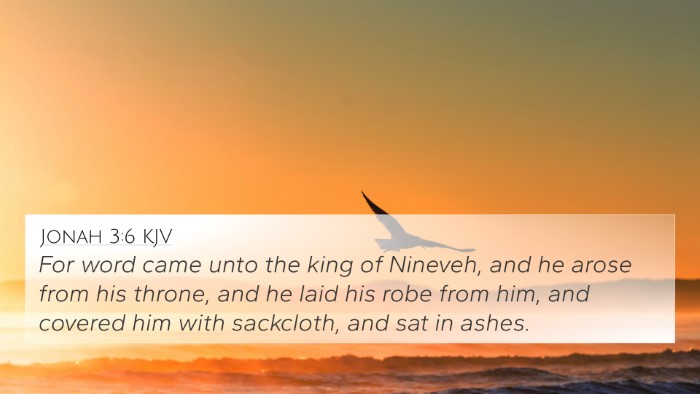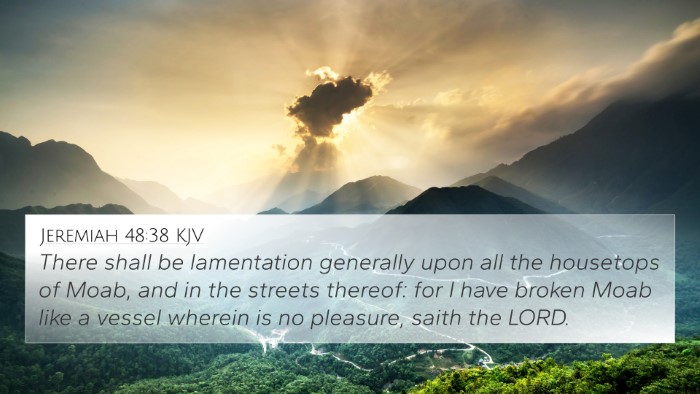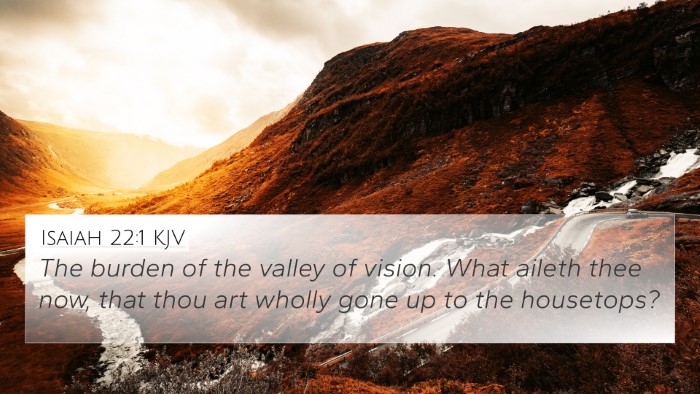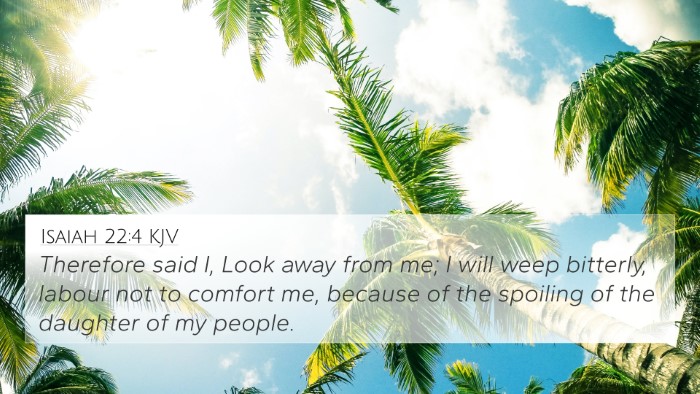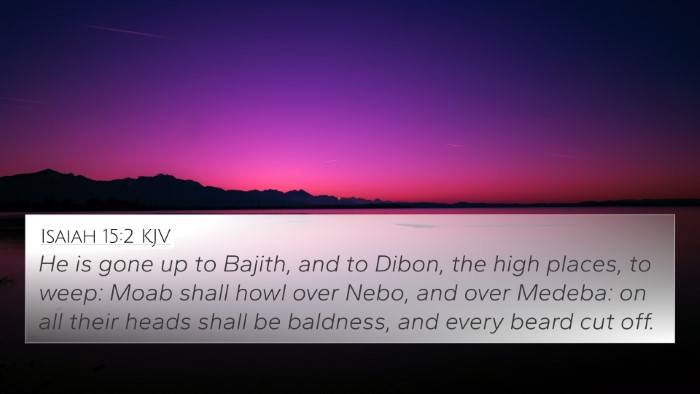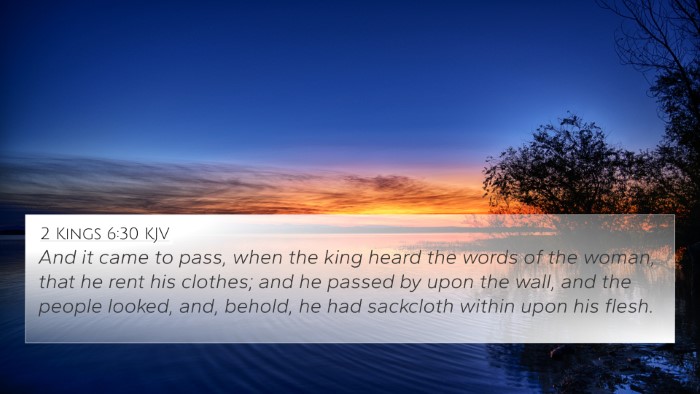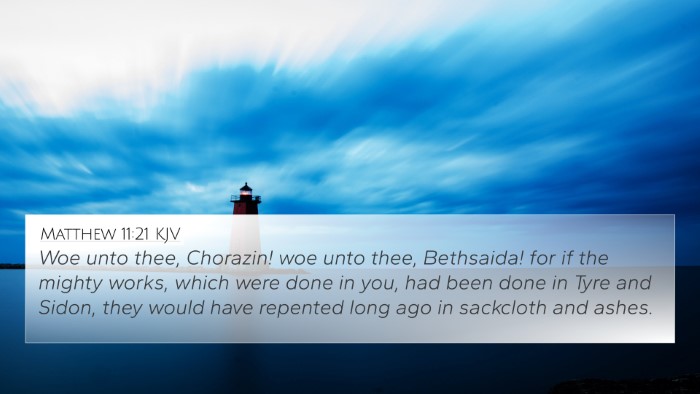Understanding Isaiah 15:3
The verse Isaiah 15:3 states: "In their streets they shall gird themselves with sackcloth: on the tops of their houses, and in their streets, every one shall howl, weeping abundantly." This poignant scripture depicts the intense mourning experienced by the people of Moab due to God's judgment.
Summary of Key Themes
- Mourning and Grief: The imagery of sackcloth symbolizes deep sorrow and repentance.
- Public Display of Distress: The mention of weeping in the streets emphasizes the collective grief of the community.
- Judgment and Consequences: This verse signifies the severe consequences faced by Moab as a result of their actions against God.
Insights from Commentaries
Matthew Henry: He observes that the people's external expressions of grief highlight their inner turmoil. The use of sackcloth denotes not only mourning but also an awareness of their sinfulness and the need for divine mercy.
Albert Barnes: Barnes emphasizes the cultural significance of sackcloth as a traditional sign of mourning in ancient Israel. He explains that the widespread nature of grief illustrates the depth of suffering experienced by the Moabites.
Adam Clarke: Clarke further elaborates that the actions described in this verse reflect an urgent call for repentance among the people. He draws a parallel to similar expressions of mourning found in other biblical texts.
Bible Verse Cross-References
Isaiah 15:3 can be cross-referenced with several other scriptures to deepen understanding:
- Job 30:31: "My harp also is turned to mourning, and my organ into the voice of them that weep."
- Jeremiah 48:38: "There shall be lamentations generally upon all the housetops of Moab, and in the streets thereof."
- Lamentations 3:48: "Mine eye runneth down with rivers of water for the destruction of the daughter of my people."
- Matthew 5:4: "Blessed are they that mourn: for they shall be comforted."
- Luke 6:25: "Woe unto you that are full! for ye shall hunger. Woe unto you that laugh now! for ye shall mourn and weep."
- Zephaniah 1:10: "And it shall come to pass in that day, saith the LORD, that there shall be the noise of a cry from the fish gate, and a howl from the second, and a great crashing from the hills."
- Revelation 18:17: "For in one hour so great riches is come to naught. And every shipmaster, and all the company in ships, and sailors, and as many as trade by sea, stood afar off."
Connections Between Bible Verses
Thematic connections and cross-referencing Bible texts enhance our understanding of mourning and judgment across scripture. For instance, the mourning depicted in Isaiah parallels the lament in Lamentations and Jeremiah, both of which echo the consequences of turning away from God.
Tools for Bible Cross-Referencing
Utilizing a Bible concordance and cross-reference Bible study methods can help identify these connections. Tools like a Bible cross-reference guide can enhance your research capabilities, allowing deeper insights into themes of repentance and mourning found throughout scripture.
How to Use Bible Cross-References
When studying verses like Isaiah 15:3, consider the broader narrative of judgment against nations and the collective response of communities to sin. Analyzing these themes across the Old and New Testaments can reveal God’s consistent call for repentance, as well as His comforting promises.
Comparative Bible Verse Analysis
Isaiah 15:3 highlights a significant moment in biblical history where divine judgment prompts communal grief. This moment parallels New Testament teachings, where Jesus speaks about the blessedness of those who mourn, indicating a thread of hope intertwined with sorrow.
Conclusion: Thematic Bible Verse Connections
Understanding Isaiah 15:3 involves recognizing the deep emotional and theological significance behind acts of mourning. The overarching themes present a stark reflection on the need for repentance and the merciful nature of God. By engaging in cross-referencing and thematic analysis, we can appreciate the rich tapestry of scripture that binds together mourning, judgment, and eventual restoration through Christ.
For those looking to further explore Bible verse parallels and scriptural cross-referencing, accessing resources focused on inter-Biblical dialogue and chain references can greatly enhance your study journey.
